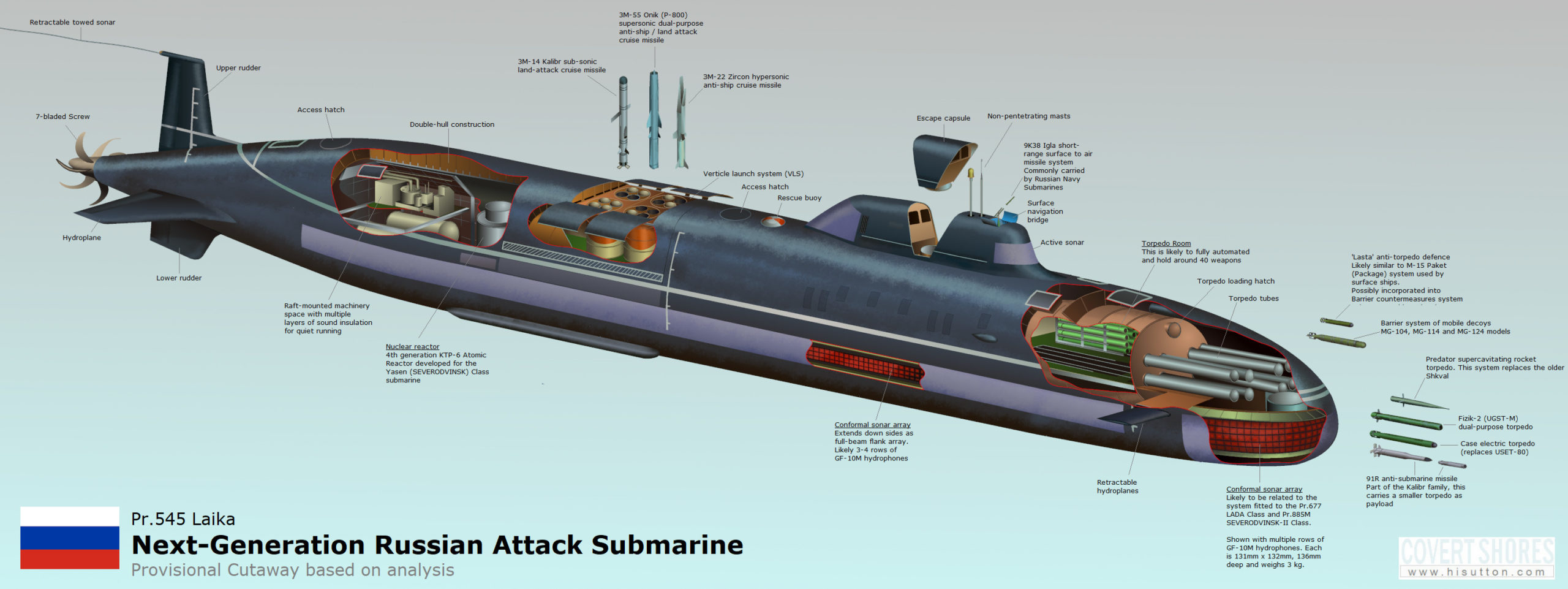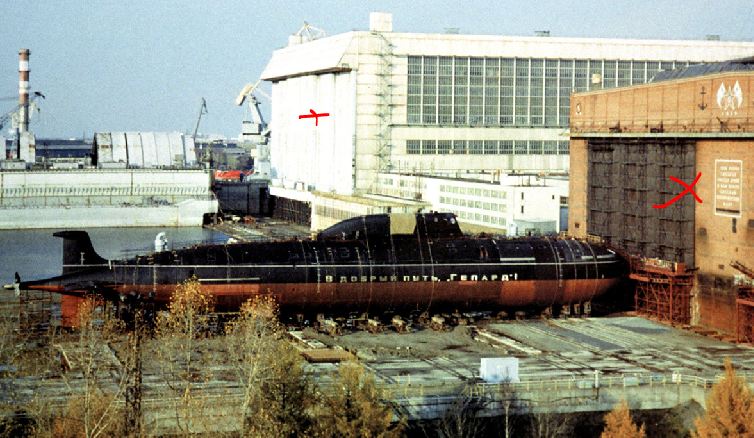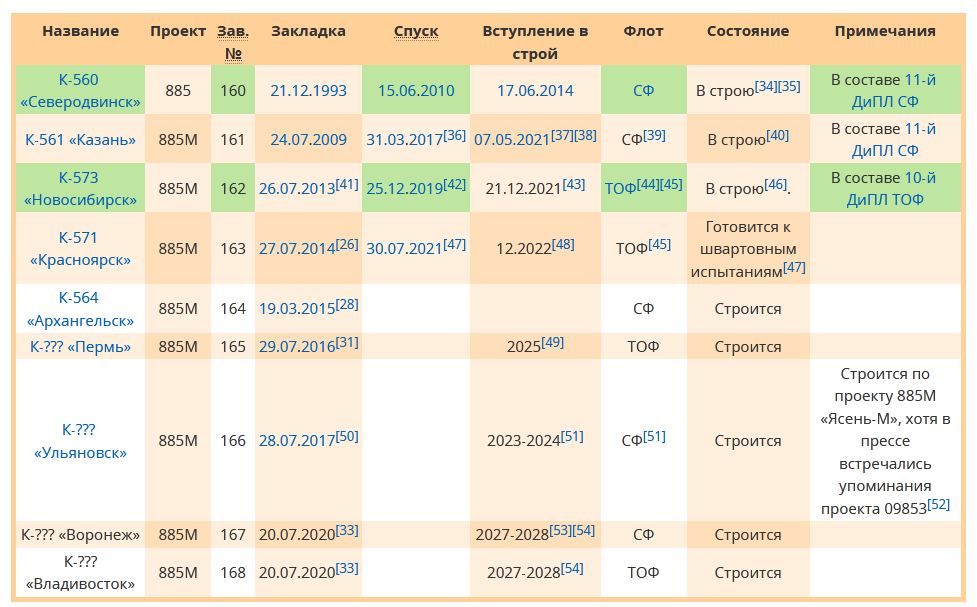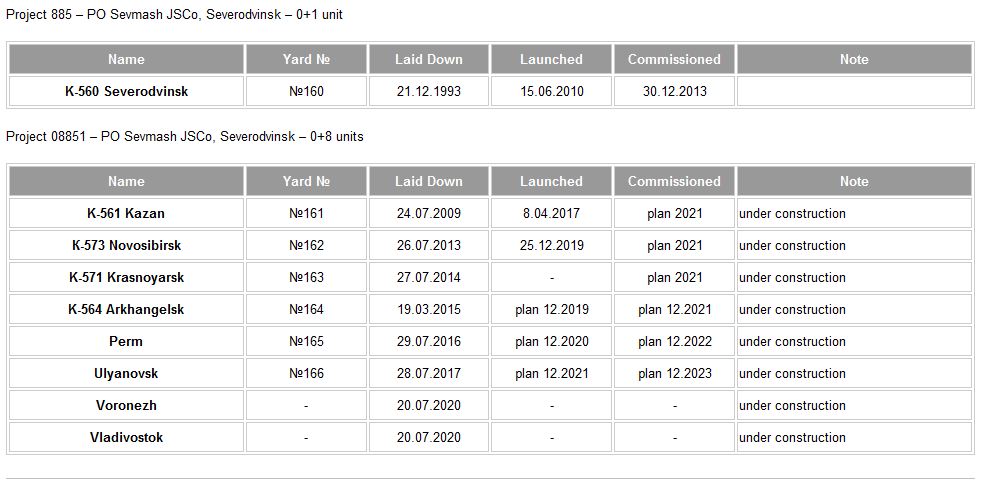 Podlodka77 Mon Jan 17, 2022 7:32 pm
Podlodka77 Mon Jan 17, 2022 7:32 pm
Hole wrote:There will be 2 more Borej class subs laid down and that´s it (for a few years at least). That side of the construction building will be free, the other will be used for more Yassen´s. There is space to build 2 - 3 Laikas for every Borej. Do the math yourself.

This class can be build up very fast. Well, after the long testing phase for the first one, of course.
* 545A; You see, i am not the only one who thinks that new class of multipurpose submarines will appear in the near future. I am of the opinion that this new submarine project will be in construction before 2025. It will be great if the first submarine of that project is handed over to the fleet before 2030. In any case, the construction would be even faster than for the 885M project. But i agree, testing phase will last for some time but not as long as for 885 Severodvinsk submarine. We could see that the 885M project submarines were significantly shorter in tests and sea trials than K-560 Severodvinsk of the original 885 project. After all, most of the equipment from the 885M submarine will only be transferred to a new project but modernized.
* 885M; Additional submarines will be constructed i hope so. Кeels for the last 2 subs were laid down in 2020 (not included in the list below). I have some thought that maybe they could start building two new submarines this year, although there is no announcement of a new contract for additional submarines of this project. We only know that Borisov said that the construction of these submarines "will continue" and thats all. There will be a free space here also because Arkhangelsk will be launched this year (probably) and Perm in the next year.
* 955A; And I think that a lot of space in Sevmash will be freed up after the eighth Pozharskiy submarine is launched (seventh submarine Imperator Alexandr the 3th will be launched this year probably), only if they decide not to built TWOO more 955A submarines, or 13th and 14th, because some of the first 955 submarines could become special mission submarines like BS-136 Orenburg and BS-64 Podmoskovye. After Pozharskiy only four 955A submarines will be in construction; Knyaz Potemkin and Dmitri Donskoy and two new ones.
Below every year you can see the total number of submarines in construction and in slipyard; for example 14/12 = 14 in construction and 12 of that number under construction indoors - which means that 2 submarines are already launched.
This list is from 2018 and its just a prediction, nothing else, but its not far from the truth. He predicted 11/8 for 2022 in 2018 when this list was created, but some of submarines from the list were not delivered to the Navy.
In 2022; (13/10); 13 submarines in construction in total and 10 of those are construction indoors ;
* 955A; Suvorov, Alexandr III, Pozharskiy, Potemkin, Donskoy
* 855A; Krasnoyarsk, Arkhangelsk, Perm, Ulyanovsk (if it belongs to 885M), Voronezh and Vladivostok,
* 09851; Habarovsk,
* 09852; Belgorod.
* LAUNCHED; Suvorov, Krasnoyarsk, Belgorod.

Last edited by Podlodka77 on Mon Jan 17, 2022 7:52 pm; edited 2 times in total








 Krepost
Krepost